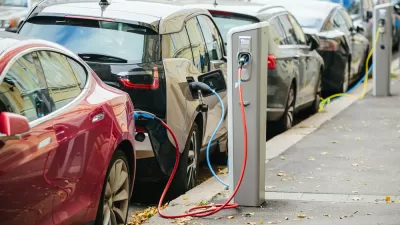Charging stations for electric cars are multiplying much faster than the plug-in vehicles that can use them for many reasons. While the federal subsidies help, some in the business community believe that the chargers will attract new customers.
"Shop while you charge" may be an advertisement for a store near you according to some analysts in the industry. While there are only "1,400 publicly accessible chargers scattered around the country, Pike Research projects 13,000 stations by the end of 2012."
Depending on where they are located, that should be more than enough to satisfy the "fewer than 15,000 all-electric cars on U.S. roads today according to Plug In America, a group promoting the technology."
Many if not most analysts doubt that number will not explode to the one million that President Obama hopes for 2015. Regardless, small and chain businesses, like Walgreens have shown interest in ordering the chargers, in part because of a federal government subsidy of "$130 million for two pilot projects that help pay for chargers at homes, offices and public locations."
"A 480-volt 'fast' charger, capable of recharging a vehicle in 30 minutes or less, typically costs $40,000, plus installation. The more common commercial 240-volt chargers... can cost $2,000 to $3,000 and take almost eight hours to fully charge a Nissan Leaf, though they offer a meaningful boost in shorter periods.
Home chargers can cost $700 to $1,000, plus at least that much for installation. Those costs will fall as production rises, says John Gartner, an analyst at Pike Research."
Contributor's note: Entire article may be available to non-WSJ subscribers for a limited time.
FULL STORY: Charging Stations Multiply But Electric Cars Are Few

Alabama: Trump Terminates Settlements for Black Communities Harmed By Raw Sewage
Trump deemed the landmark civil rights agreement “illegal DEI and environmental justice policy.”

Planetizen Federal Action Tracker
A weekly monitor of how Trump’s orders and actions are impacting planners and planning in America.

The 120 Year Old Tiny Home Villages That Sheltered San Francisco’s Earthquake Refugees
More than a century ago, San Francisco mobilized to house thousands of residents displaced by the 1906 earthquake. Could their strategy offer a model for the present?

Housing Vouchers as a Key Piece of Houston’s Housing Strategy
The Houston Housing Authority supports 19,000 households through the housing voucher program.

Rural Population Grew Again in 2024
Americans continued to move to smaller towns and cities, resulting in a fourth straight year of growth in rural areas.

Safe Streets Grants: What to Know
This year’s round of Safe Streets for All grant criteria come with some changes.
Urban Design for Planners 1: Software Tools
This six-course series explores essential urban design concepts using open source software and equips planners with the tools they need to participate fully in the urban design process.
Planning for Universal Design
Learn the tools for implementing Universal Design in planning regulations.
Clanton & Associates, Inc.
Jessamine County Fiscal Court
Institute for Housing and Urban Development Studies (IHS)
City of Grandview
Harvard GSD Executive Education
Toledo-Lucas County Plan Commissions
Salt Lake City
NYU Wagner Graduate School of Public Service





























